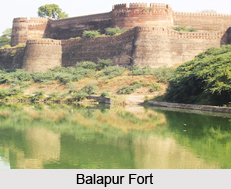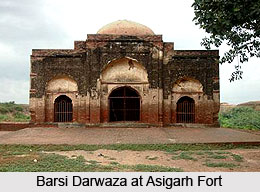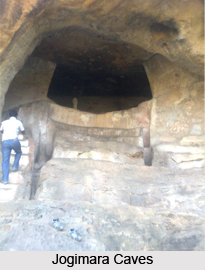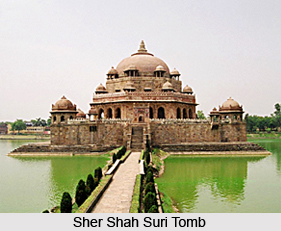 Monuments in Sasaram include some of the well-known architectural masterpieces of Muslim rulers. It is situated at a distance of ninety eight kilometers to the south of Arrah. The place is renowned for its mausoleum. The name, Sasaram is believed to have derived from a chief with a thousand arms. There is a belief that the place is named after the sage Parashurama and the fabled King Sahastrabahu. It is also the place of birth of Sher Shah Suri, the famous ruler who ruled over Delhi from the 1540 AD to 1545 AD.
Monuments in Sasaram include some of the well-known architectural masterpieces of Muslim rulers. It is situated at a distance of ninety eight kilometers to the south of Arrah. The place is renowned for its mausoleum. The name, Sasaram is believed to have derived from a chief with a thousand arms. There is a belief that the place is named after the sage Parashurama and the fabled King Sahastrabahu. It is also the place of birth of Sher Shah Suri, the famous ruler who ruled over Delhi from the 1540 AD to 1545 AD.
The famous architectural heritage of the Suri dynasty may be divided into two separate and distinct periods. The first phase emerged at their capital, Sasaram, in the state of Bihar, under the audacious Sher Shah Suri between 1530 and 1540, where a group of tombs were erected, which took the Lodi style to its ultimate expression. The second phase occurred between 1540 and 1545, when Sher Shah Suri wrested control from Humayun. Under his active patronage a number of architectural innovations were adopted and these represented an important development in the gestation of the subsequent style of Mughal Dynasty.
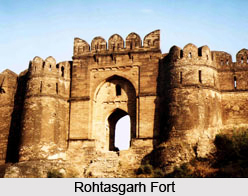 The first phase of tomb building at Sasaram clearly reflects the ambition of Sher Shah Suri to form a monument grander than anything found in Delhi. In order to give inspiration to his dreams, he procured the services of Aliwal Khan, a master builder trained in the Imperial tradition, who began with the construction of the tomb of Hasan Sur Khan, the father of Sher Shah Suri, in the year 1525. This is a fairly conventional exercise in Lodi design, but his subsequent work, the tomb of Sher Shah Suri, is an extraordinary building, an architectural masterpiece, a huge and noble composition set in a beautiful tank approached by a causeway. This remarkable monument, constructed of the finest Chunar sandstone, had a major impact on the architectural evolution of Indo-Islamic funerary architecture and Sher Shah Suri`s tomb at Sasaram in Bihar demonstrate how brilliantly the torch of architecture burned in the hands of Sher Shah Suri.
The first phase of tomb building at Sasaram clearly reflects the ambition of Sher Shah Suri to form a monument grander than anything found in Delhi. In order to give inspiration to his dreams, he procured the services of Aliwal Khan, a master builder trained in the Imperial tradition, who began with the construction of the tomb of Hasan Sur Khan, the father of Sher Shah Suri, in the year 1525. This is a fairly conventional exercise in Lodi design, but his subsequent work, the tomb of Sher Shah Suri, is an extraordinary building, an architectural masterpiece, a huge and noble composition set in a beautiful tank approached by a causeway. This remarkable monument, constructed of the finest Chunar sandstone, had a major impact on the architectural evolution of Indo-Islamic funerary architecture and Sher Shah Suri`s tomb at Sasaram in Bihar demonstrate how brilliantly the torch of architecture burned in the hands of Sher Shah Suri.
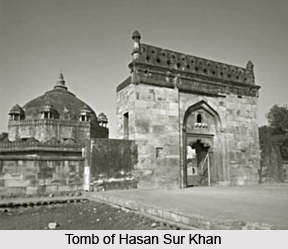 The magnificent five-storey Tomb of Sher Shah Suri, situated on the west edge of the town, is made of red stone. Constructed by him to the designs of his architect, Aliwal Khan, it stands on a stepped square plinth on a terrace approached through a gateway via a bridge placed across a large lake. An error in orientating the tomb on the main axis was corrected only after the lower platform had been built, creating a curious skewed relationship between the upper and lower levels. The tomb, an immense pyramidal pile of masonry ordered in five distinct stages, rises over forty six meters and is a sophisticated development of earlier Lodi prototypes in Delhi. The dome bears a twenty two meters span. It comprises an octagonal chamber surrounded by an arcade, which forms a gallery. The domed canopies in each corner of the platform, the ubiquitous kiosks and delicate merlons, and the octagonal drum coalesce to form a highly accomplished design and a remarkably powerful silhouette.
The magnificent five-storey Tomb of Sher Shah Suri, situated on the west edge of the town, is made of red stone. Constructed by him to the designs of his architect, Aliwal Khan, it stands on a stepped square plinth on a terrace approached through a gateway via a bridge placed across a large lake. An error in orientating the tomb on the main axis was corrected only after the lower platform had been built, creating a curious skewed relationship between the upper and lower levels. The tomb, an immense pyramidal pile of masonry ordered in five distinct stages, rises over forty six meters and is a sophisticated development of earlier Lodi prototypes in Delhi. The dome bears a twenty two meters span. It comprises an octagonal chamber surrounded by an arcade, which forms a gallery. The domed canopies in each corner of the platform, the ubiquitous kiosks and delicate merlons, and the octagonal drum coalesce to form a highly accomplished design and a remarkably powerful silhouette.
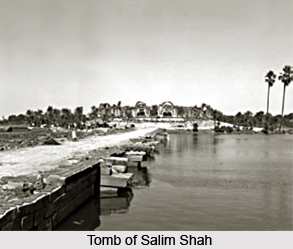 Situated within the town is the Tomb of Hasan Sur Khan, Sher Shah Suri`s father, who was killed at Kalinjar. The Tomb of Salim Shah, who was the son of Sher Shah Suri, lies at a distance of about one mile to the north-west, but it is incomplete. On a high hill east of the town is the remarkable Mosque of Chandan Shahid. In a small cave near the summit of the hill is an early inscription during the rule of Ashoka from 232 BC. About one mile to the north, at Koraich, is a small British cemetery from the time of the Sepoy Mutiny.
Situated within the town is the Tomb of Hasan Sur Khan, Sher Shah Suri`s father, who was killed at Kalinjar. The Tomb of Salim Shah, who was the son of Sher Shah Suri, lies at a distance of about one mile to the north-west, but it is incomplete. On a high hill east of the town is the remarkable Mosque of Chandan Shahid. In a small cave near the summit of the hill is an early inscription during the rule of Ashoka from 232 BC. About one mile to the north, at Koraich, is a small British cemetery from the time of the Sepoy Mutiny.
Situated at a distance of about thirty nine kilometers from Sasaram is the Rohtasgarh Fort, covering an area of four miles or more of a plateau. One can get to see there some of the monumental remains of Sher Shah Suri. The Fort is regarded among the strongest and also the largest fill forts in India and served as a shelter to many a great personality. Some of them include Shah Jahan, Sher Shah Suri, Man Singh and Mir Qasim, who had used this fort. Previously, there existed fourteen main gates in the Fort but afterwards, Sher Shah Suri closed ten of them.
Thus, the historical structures in Sasaram are a testament of the glories of the by gone era. Presently, apart from the historical significance of Sasaram, the place is home to a flourishing stone mining industry and well-known for its good-quality stone chips which are supplied to various parts of India. The most imposing specimen of the Pathan architecture is situated amidst the artificial lake in Sasaram, the desire of many an emperor.


